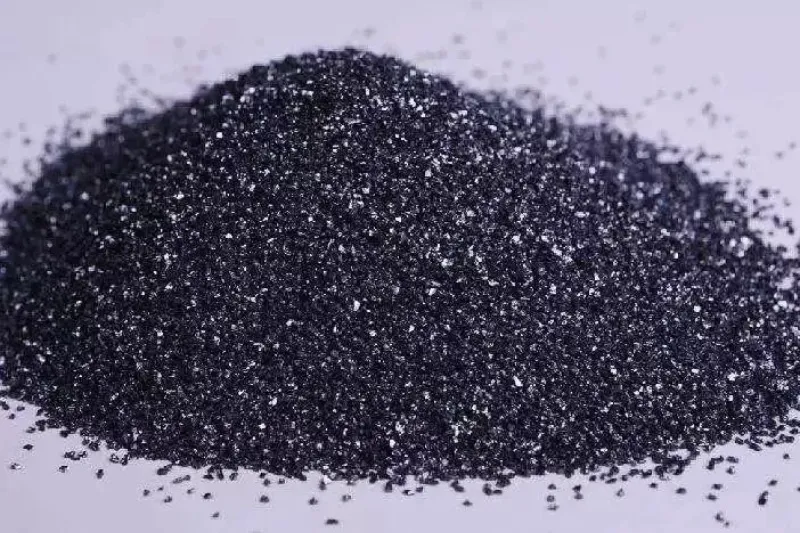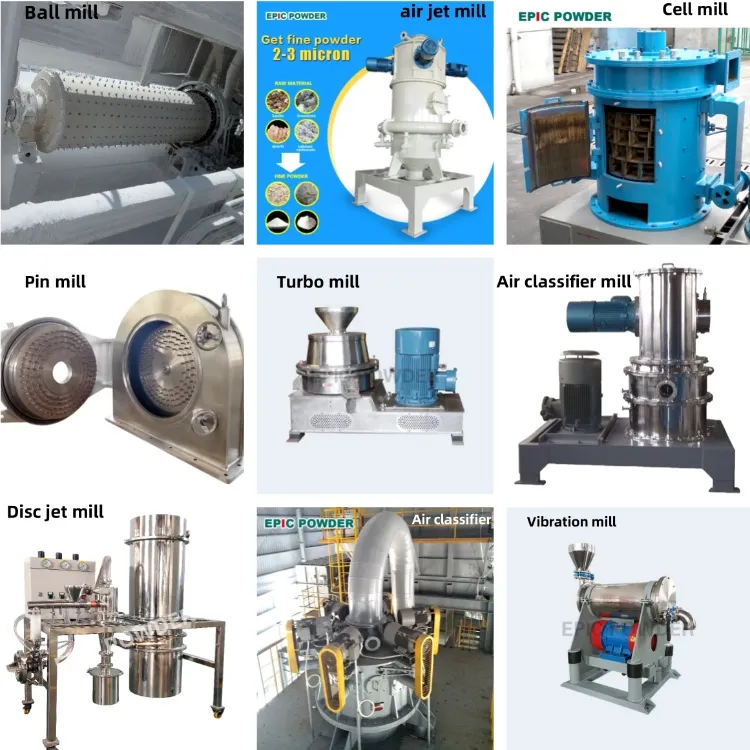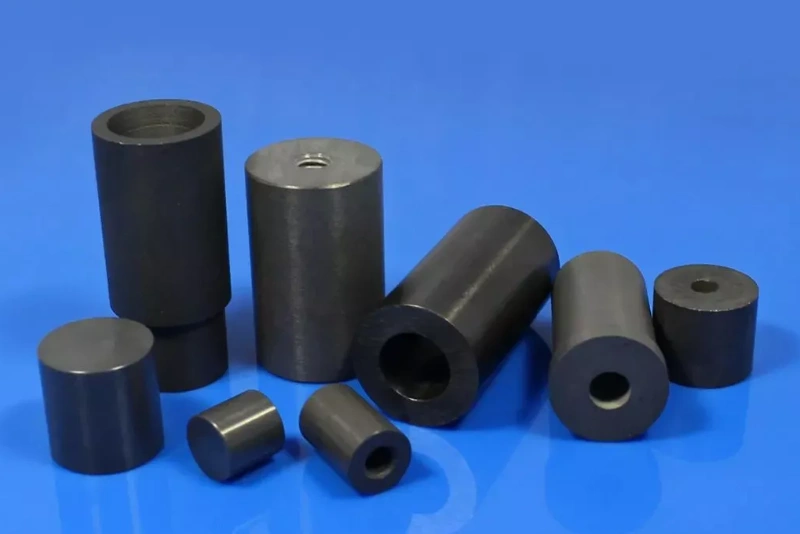Silicon carbide (SiC) is a fascinating compound. You can find it in the semiconductor industry and in advanced ceramic products. This often leads to confusion, as people may think they are the same material. However, they are not. Silicon carbide can be both a hard, wear-resistant advanced ceramic and an efficient, energy-saving semiconductor. Although both forms share the same chemical composition, they play two completely different roles in the industrial sector. Ceramic silicon carbide and semiconductor silicon carbide differ significantly in crystal structure, preparation processes, performance characteristics, and applications:
Raw Material Purity Requirements
Ceramic-grade silicon carbide has relatively low purity requirements. It is typically between 90% and 98% for general industrial-grade products. High-performance structural ceramics may require 98%-99.5% purity. For example, reaction-sintered SiC requires low free silicon content. It allows for a small amount of impurities. Sometimes, sintering aids like alumina (Al₂O₃) or yttria (Y₂O₃) are added. These additives improve sintering performance. They help reduce sintering temperature and increase final product density.
Semiconductor-grade silicon carbide requires extremely high purity. Substrate-level single-crystal SiC must be ≥99.9999% (6N) purity. Some high-end applications demand 7N (99.99999%) purity. Impurity concentrations, especially boron (B), aluminum (Al), and vanadium (V), must be kept below 10¹⁶ atoms/cm³. Even trace amounts of impurities like iron (Fe) or boron (B) can severely affect electrical performance. This leads to carrier scattering, reduced breakdown strength, and decreased device performance and reliability.

Crystal Structure and Quality
Ceramic-grade silicon carbide generally exists as polycrystalline powder or sintered bodies. These consist of randomly arranged small SiC crystals. The crystal structure includes multiple crystal forms, such as α-SiC and β-SiC. There is no strict requirement for a single crystal type. The focus is on material density and uniformity. Its internal structure contains grain boundaries and small pores. It may also include sintering aids like alumina or yttria.
Semiconductor-grade silicon carbide must be a single-crystal substrate or epitaxial layer. The crystal structure is highly ordered. Specific crystal types must be controlled. High-precision crystal growth techniques, such as 4H-SiC and 6H-SiC, are used. Electrical properties like electron mobility and band gap are highly sensitive to crystal type. The 4H-SiC crystal type is preferred for power devices. It offers high carrier mobility and breakdown strength.
Preparation Process
The preparation process for ceramic-grade silicon carbide is relatively simple. It involves powder preparation, forming, and sintering. This process is similar to “brick firing.” Industrial-grade SiC powder, typically micron-sized, is mixed with a binder. The mixture is pressed into shape. It is then sintered at high temperatures (1600°C – 2200°C). This causes diffusion between particles to densify the material. A density of 90% or more is typically sufficient. The process does not require precise crystal growth control. It focuses on the stability and consistency of forming and sintering. This flexibility allows for the production of complex-shaped components. The raw material purity requirements are relatively low.
The preparation process for semiconductor-grade silicon carbide is much more complex. It includes high-purity powder preparation, single-crystal substrate growth, epitaxial layer deposition, and device manufacturing. Single-crystal substrates are usually grown using physical vapor transport (PVT). This requires high temperatures (2200°C – 2400°C) and high vacuum conditions. Precise control of temperature gradients (±1°C) and pressure is required to ensure crystal integrity. Afterward, chemical vapor deposition (CVD) is used to grow the epitaxial layer. The process must take place in ultra-clean environments, such as Class 10 cleanrooms. Contamination must be prevented to maintain material performance. This process is highly precise. Strict raw material purity (>99.9999%) and equipment standards are required.

Cost Differences and Market Focus
Ceramic-grade silicon carbide is less expensive. It uses industrial-grade SiC powder and a simpler preparation process. The price per ton typically ranges from thousands to tens of thousands of yuan. Its market applications are broad, mainly targeting industries like abrasives, refractory materials, and other cost-sensitive sectors.
Semiconductor-grade silicon carbide is extremely expensive. The substrate preparation process is lengthy. Defect control is challenging. The yield rate is low. A 6-inch substrate can cost several thousand dollars. Its market is focused on high-end electronic fields. These include power semiconductor devices and RF components. With the rapid growth of industries like electric vehicles and 5G communications, market demand is increasing rapidly.
Application Areas
Ceramic-grade silicon carbide is the “industrial tough guy.” It is mainly used as a structural material. It has excellent mechanical properties, such as high hardness and wear resistance. It also has excellent thermal properties, such as high-temperature resistance and oxidation resistance. It is widely used in abrasives (grinding wheels, sandpaper), refractory materials (furnace linings), and wear-resistant/corrosion-resistant components (pump bodies, pipe linings).

Semiconductor-grade silicon carbide is the “electronic elite.” It takes advantage of its wide bandgap semiconductor properties. It delivers unique advantages in electronic devices. In power devices, such as inverters for electric vehicles and converters for power grids, it improves power conversion efficiency and reduces energy loss. In RF devices, like 5G base stations and radars, semiconductor SiC enhances operational frequency and signal transmission capabilities. It is also used in optoelectronic devices, such as blue LED substrates, contributing to bright blue light sources.
| Dimensions | Silicon carbide for ceramics | Silicon carbide for semiconductors |
| Crystal structure | Polycrystalline, various crystal forms | Single crystal, strict crystal form screening |
| Preparation focus | Densification and shape control | Crystal quality and electrical performance control |
| Performance priority | Mechanical strength, corrosion resistance, thermal stability | Electrical properties (bandgap width, breakdown electric field, etc.) |
| Application scenarios | Structural parts, wear-resistant parts, high-temperature resistant parts | High-power devices, high-frequency devices, optoelectronic devices |
| Cost-driven | Process flexibility, raw material cost | Crystal growth rate, equipment accuracy, raw material purity |
Epic Powder
In conclusion, Epic Powder plays a crucial role in advancing the production of both ceramic-grade and semiconductor-grade silicon carbide. By providing cutting-edge grinding equipment such as ball mills, jet mills, and classifiers, Epic Powder ensures that the raw materials meet the strict purity, structure, and performance requirements for various applications. Our tailored solutions support industries from ceramics to semiconductors, delivering the highest standards in material processing and enabling technological advancements across different sectors.
